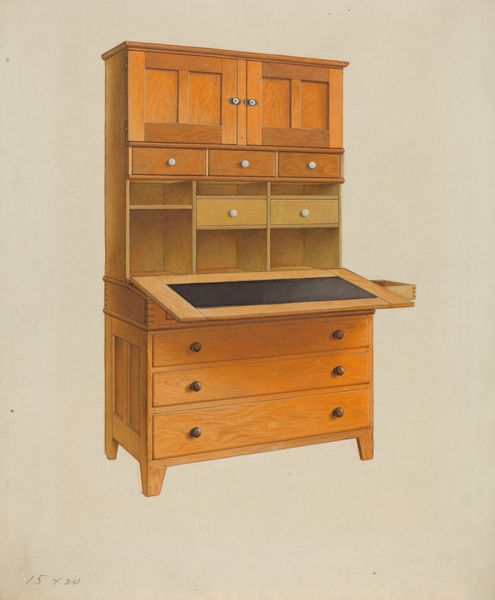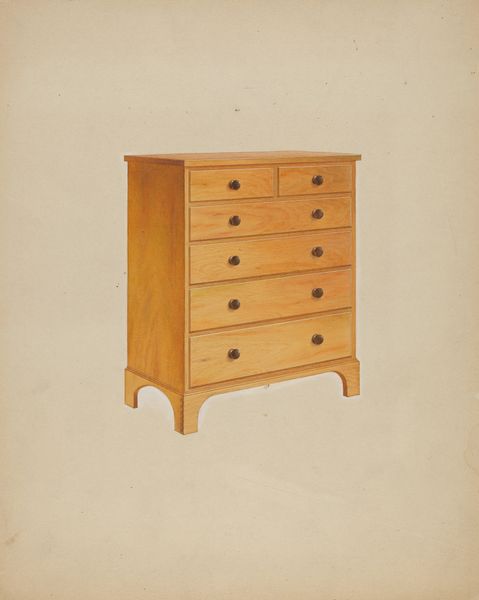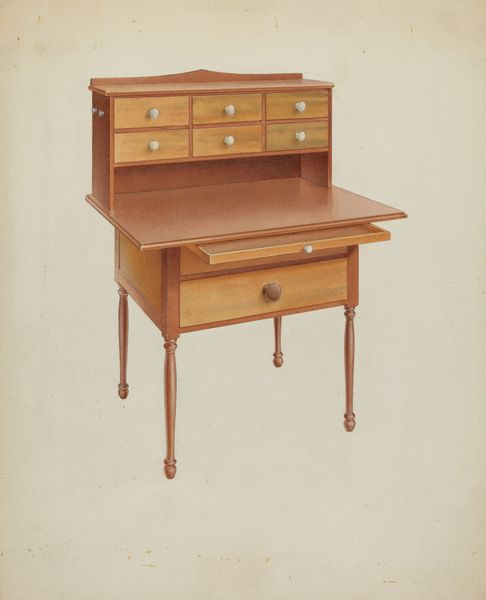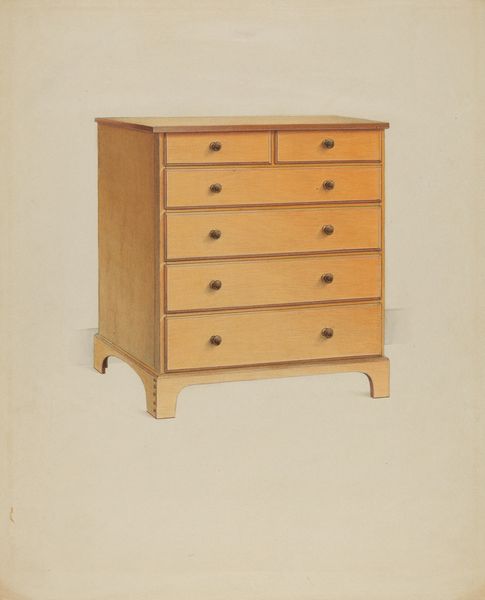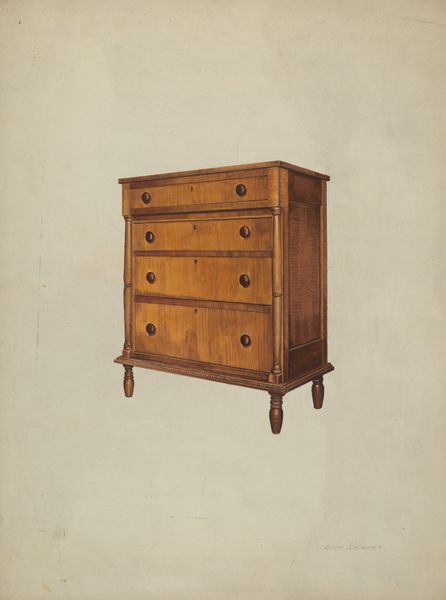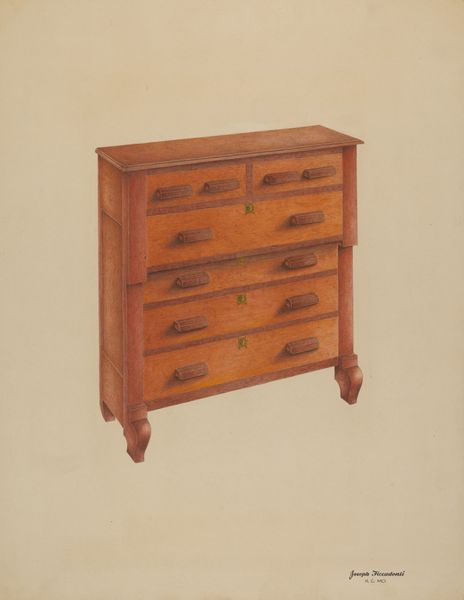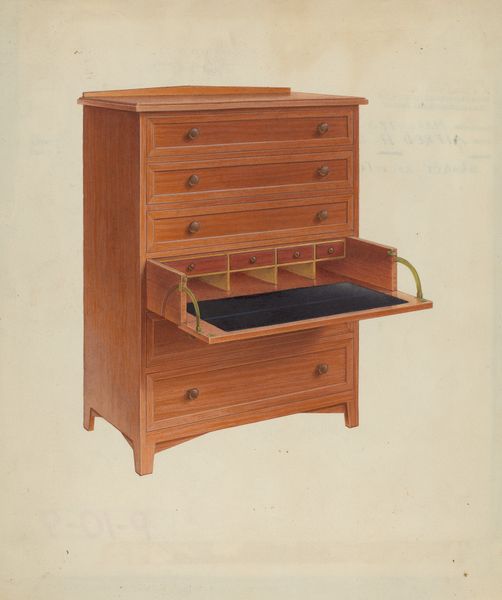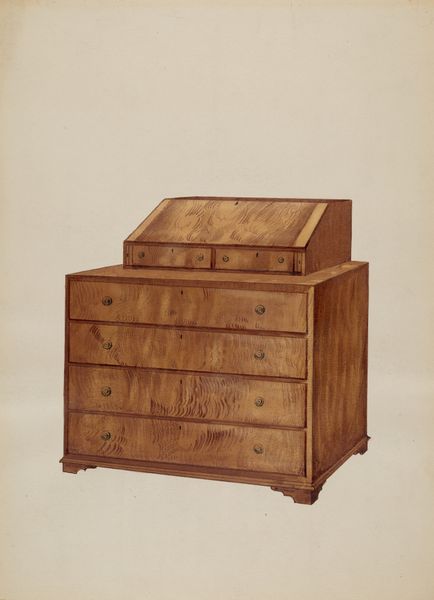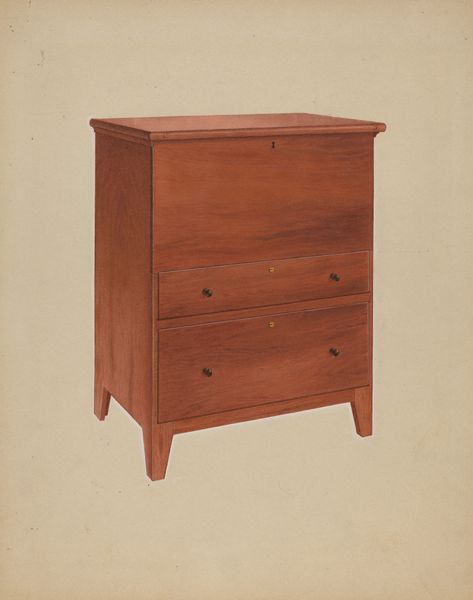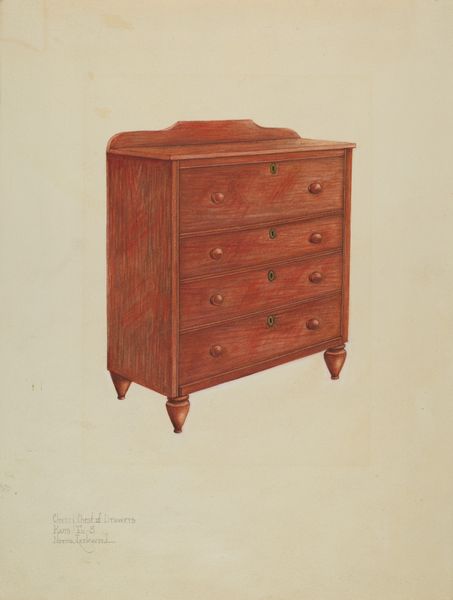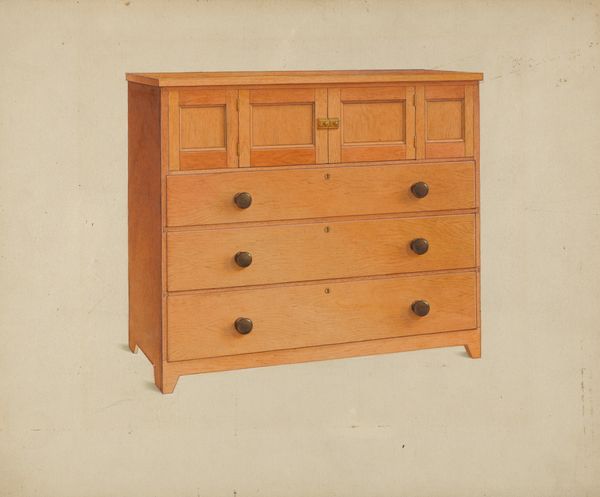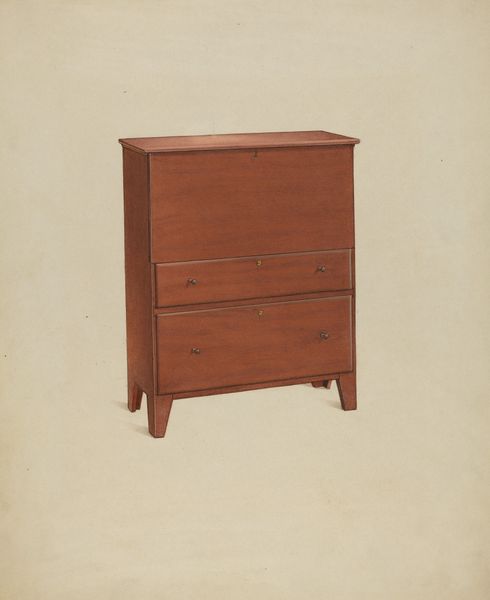
drawing
#
drawing
#
decorative-art
#
watercolor
#
realism
Dimensions: overall: 27.9 x 22.9 cm (11 x 9 in.) Original IAD Object: 58" high; 42"wide; 20 1/2" deep
Copyright: National Gallery of Art: CC0 1.0
Curator: Look at the subtle detailing in this piece. What strikes you first about it? Editor: Well, immediately I see the artist's delicate touch. It’s so… clean and pristine. This is the “Shaker Desk,” a watercolor drawing made around 1937. Curator: It’s fascinating to see this piece categorized as both drawing and decorative art. We see the inherent skill and technical prowess on display here, of course. But I’m drawn to thinking about how Shaker designs redefined utility. Their furniture production wasn't just about art; it was about functionality within a specific social system. Editor: Exactly. And Shaker design principles weren’t only rooted in practicality. Shakers really thought of crafting as an act of worship, and that making became, in some ways, inseparable from spiritual devotion. It would certainly affect how an artisan saw the labor of crafting, the materials they chose, even the final reception by the public. Curator: Indeed. And what’s crucial is recognizing that, despite its clean lines, creating something like this Shaker Desk drawing wouldn't happen without its own politics of taste. These watercolor renderings and the larger Shaker aesthetic really challenged conventional hierarchies between the fine and decorative arts in their time. Editor: That's right, the image plays into an interesting role for furniture design that transcends function. Looking at this, I appreciate its almost diagrammatic presentation – highlighting both the form and utility of Shaker ideals, with clear precision. I do think this perspective could allow a viewer a window into understanding that ethos of clean, ordered utility that’s really an integral feature in the movement itself. Curator: Absolutely. The desk becomes not just an object, but a manifestation of a community’s values and way of life. I'm walking away pondering about how this rendering helps to frame a very specific history of labor, but also consumer culture. Editor: Me too, I can’t help thinking of the historical underpinnings. We see the beginnings of trends influencing production methods, social ideologies informing function…there’s definitely a depth that's deceptively still waters.
Comments
No comments
Be the first to comment and join the conversation on the ultimate creative platform.
